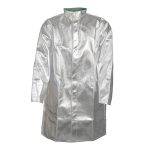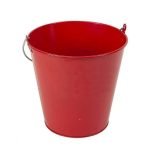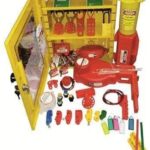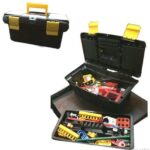Your list is empty, add products to the list to send a request
Where Is the Best Place to Put a Smoke Detector? Expert Fire Safety Placement Guide

26
May
Knowing where to install smoke detectors is just as important as owning them. Proper placement ensures early detection and can make the difference between life and death in a fire emergency.
In this comprehensive guide, we’ll explain the best locations for smoke detectors, how to avoid common placement mistakes, and what the latest fire safety standards recommend for optimal protection.
Why Proper Smoke Detector Placement Matters
Smoke rises. That’s why correct positioning—especially ceiling versus wall installation—significantly affects how quickly a detector can respond.
According to the National Fire Protection Association (NFPA), the right smoke detector placement improves response time and reduces the chance of fatalities in residential and commercial fires.
General Guidelines for Smoke Detector Placement
To achieve full coverage, smoke detectors should be installed in the following areas:
- Inside every bedroom
- Outside each sleeping area (such as hallways)
- On every level of the home, including the basement
- Near stairways and landings
- In the living room or common areas
Best Locations in the Home for Smoke Detectors
1. Bedrooms
Sleeping individuals won’t smell smoke or wake up without an alarm. Place a detector on the ceiling near the center of the room or on a wall 4–12 inches from the ceiling.
2. Hallways Outside Sleeping Areas
Install a detector in every hallway that leads to bedrooms. For multiple adjacent bedrooms, place one centrally in the hallway.
3. Living Room / Family Room
This is where electronics, heating systems, and flammable items may be present. Install detectors in open living spaces.
4. Basements
Place a detector on the ceiling at the bottom of the stairway. Avoid placing it near ducts or vents.
5. Stairways and Landings
Smoke can travel vertically through stairs. Detectors near staircases ensure faster detection across floors.
Should Smoke Detectors Be on the Wall or Ceiling?
The best place to install a smoke detector is on the ceiling, because smoke rises. However, wall mounting is also acceptable under specific conditions.
Ceiling Installation:
- Place at least 4 inches from any wall.
Wall Installation:
- Place detectors 4 to 12 inches from the ceiling.
Avoid:
- Mounting near ceiling fans, windows, or HVAC vents.
- Placing in corners or recessed ceiling areas.
Areas to Avoid When Installing Smoke Detectors
To reduce false alarms and improve functionality, do not place smoke detectors:
- Within 10 feet of cooking appliances
- In bathrooms, where steam can trigger false alarms
- Near windows, doors, or ducts where airflow might interfere
- In dusty or greasy environments, like garages or workshops
How to Place Smoke Detectors in Multi-Level Homes
For homes with more than one floor:
- Install at least one detector per floor
- Place at the top and bottom of stairways
- Ensure all detectors are interconnected if possible
Smoke Detector Placement for Open-Concept Spaces
Large open rooms need tailored placement. For high or vaulted ceilings:
- Mount detectors within 3 feet of the highest point
- Consider adding extra detectors in opposite ends of large rooms
Use addressable systems like the Ravel Conventional Smoke Detector for large or commercial spaces where pinpoint location detection is essential.
Installing Smoke Detectors in Commercial Buildings
Commercial and industrial environments require more robust systems. Follow these principles:
- Use addressable smoke detectors to identify zones
- Install per floor plan and risk assessment
- Integrate with fire alarm control panels
Always adhere to local fire codes and consult certified professionals for installation.
How Many Smoke Detectors Do You Need?
The general rule is:
- One in every bedroom
- One outside each sleeping area
- One per floor
- Additional units in hallways, stairwells, and large rooms
Larger properties may need interconnected or addressable systems for full coverage.
Using Interconnected Smoke Alarms
Interconnected systems ensure all alarms sound when one is triggered. This is especially beneficial for:
- Multi-story homes
- Large apartments
- Commercial setups
Maintenance Tips for Optimal Performance
Proper installation is only part of the equation. Maintain smoke detectors by:
- Testing monthly using the built-in test button
- Replacing batteries every 6 months or using 10-year sealed models
- Vacuuming or dusting detectors every few months
- Replacing the entire unit every 8–10 years
Choosing the Right Smoke Detector
Popular types include:
- Photoelectric: For smoldering fires
- Ionization: For flaming fires
- Dual-sensor: Best overall protection
- Addressable: Ideal for commercial use
One recommended model is the Ravel Conventional Smoke Detector, known for reliability and ease of integration.
Conclusion:
Knowing where to place your smoke detector is essential to protecting your family and property. Ceiling-mounted detectors in key areas—bedrooms, hallways, staircases, and every level—provide the best coverage.
For commercial environments or large buildings, advanced systems like the Ravel Conventional Smoke Detector are a trusted solution.
FAQs
1. Where should smoke detectors be positioned?
Install one in every bedroom, outside each sleeping area, on each level of your home, and near stairways. For best results, mount detectors on the ceiling, at least 4 inches from the wall.
2. Should smoke detectors be on the wall or ceiling?
Ceiling placement is preferred. If installing on the wall, place it 4–12 inches from the ceiling. Avoid corners and areas near fans or vents.
3. Where are smoke alarms most effective?
Smoke alarms are most effective when installed near sleeping areas, on every level of the home, and in central locations where smoke is likely to rise and be detected quickly.
Take the next step in fire safety.
Explore the Smoke Detector for reliable protection and smart placement across your home or business.



























